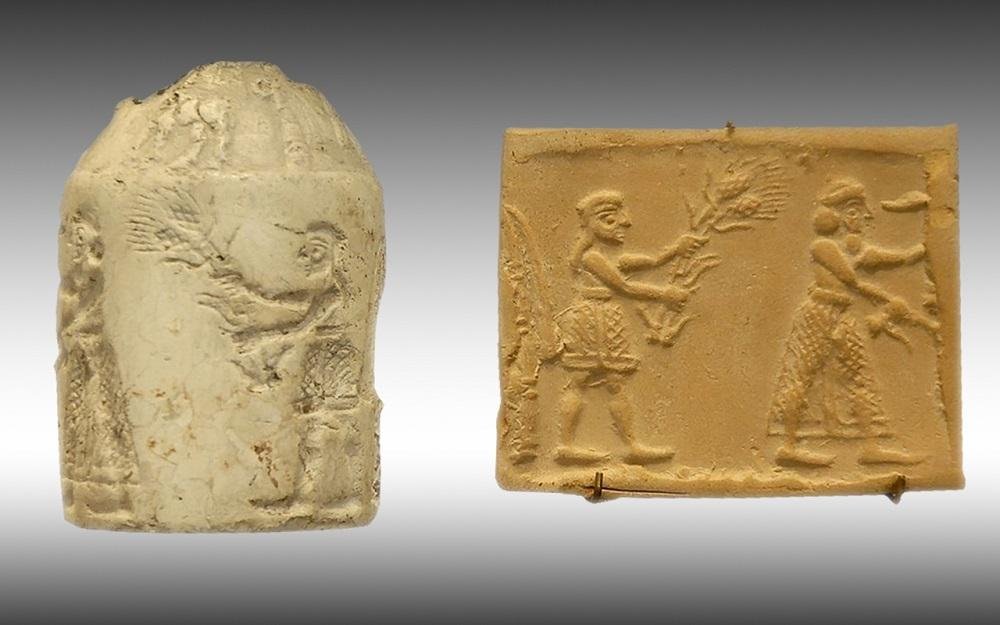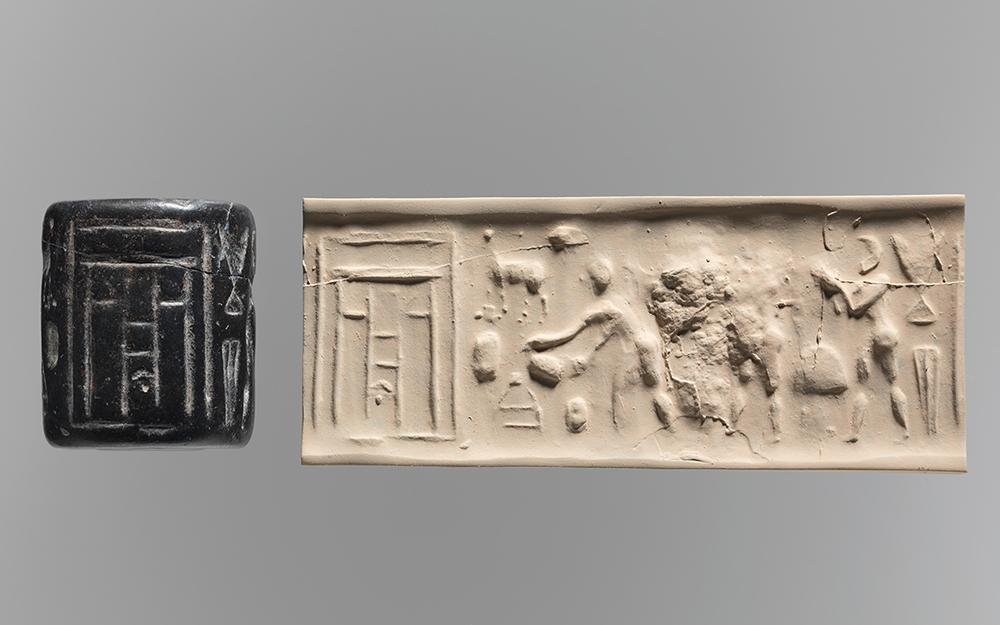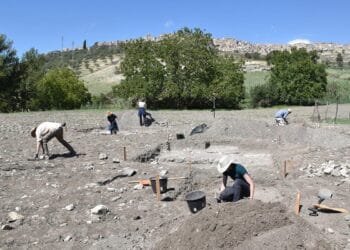A cylinder seal was a small cylindrical object usually made of stone or clay that served as a form of identification, authentication, and documentation. These seals were prevalent in civilizations such as Mesopotamia, Iran, Egypt, and the Indus Valley.

Function and Design: Cylinder seals were used as personal or official seals by individuals in positions of power or authority. They were typically engraved with intricate designs, often depicting scenes from daily life, religious motifs, or historical events. The seal would be rolled across a soft clay or wax surface, leaving behind an impression. The seal’s design acted as a unique identifier, indicating the seal’s owner and ensuring the authenticity of documents, containers, or doors.

Significance: Cylinder seals held great significance in ancient societies. They played a crucial role in administrative, legal, and commercial transactions. Seals were used to authenticate royal decrees, contracts, or legal agreements, ensuring their validity. They were also employed to secure storage containers, indicating whether the contents had been tampered with. Additionally, cylinder seals were a symbol of social status and authority, often worn as personal accessories or mounted on objects of importance.
Artistic Expression: Cylinder seals were highly valued for their artistic and aesthetic qualities. The intricate engravings showcased the artistic skills and craftsmanship of ancient civilizations. The designs on the seals provided insights into the culture, mythology, and religious beliefs of the time. They served as a visual record of the past, depicting narratives and iconography that reflected the society’s values and worldview.

Historical Documentation: Cylinder seals also played a crucial role in documenting historical events and genealogies. The scenes depicted on the seals often conveyed stories of kings, gods, battles, and rituals. These visual narratives provided valuable historical and cultural information, aiding researchers in understanding ancient civilizations. Cylinder seals have served as valuable sources for archaeologists, historians, and art historians, helping them piece together the fragments of the past.
Legacy and Importance: The study and interpretation of cylinder seals have contributed significantly to our knowledge of ancient cultures, their writing systems, and their artistic achievements. Today, these seals are cherished artifacts displayed in museums worldwide, allowing us to appreciate the artistic and historical achievements of our ancestors.

























